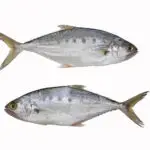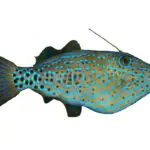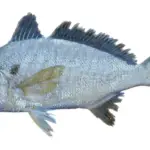Spanish mackerel are aggressive eaters, strong fighters, and are widely available in many Atlantic coastal waterways.
But, many anglers think that the ‘value‘ of a Spanish mackerel stops there…Is it true? Are Spanish mackerel good to eat or are they only a fun inshore species to catch?
Table of Contents
- So, Are Spanish Mackerel Any Good To Eat?
- What Does Spanish Mackerel Taste Like?
- Is Spanish Mackerel Good for You?
- Is Spanish Mackerel Safe to Eat?
- How to Clean Spanish Mackerel?
- Best Ways to Cook Spanish Mackerel
- Can Spanish Mackerel be Eaten Raw?
- Final Thoughts
- Related Posts
So, Are Spanish Mackerel Any Good To Eat?
Spanish Mackerel often get a bad reputation for being oily, with a strong fishy taste. However, when prepared properly and eaten fresh, it’s actually quite good to eat, especially when grilled or smoked.
Anglers who take care to properly clean the fish, remove the bloodline and get fillets on ice right away, will be rewarded with a tasty meal.
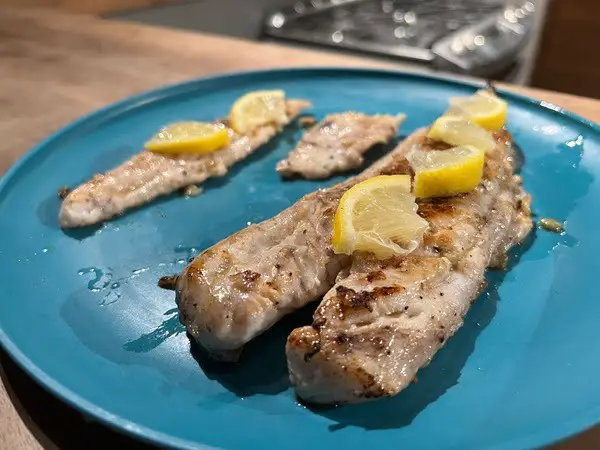
Does Spanish mackerel taste as good as highly desired fish like pompano, snook, or seabass? No, but they are perfectly edible and enjoyed by plenty of folks.
What Does Spanish Mackerel Taste Like?
Spanish mackerel have soft, dark flesh with a mildly oily flavor, however, they have a much lower oil content than their other mackerel and tuna relatives.
Spanish mackerel’s flavor is most comparable to other oily fish like bluefish or king mackerel but generally is less fishy.
Is Spanish Mackerel Good for You?
Yes! Fatty fish are very healthy in general and Spanish mackerel are no exception. In fact, the American Heart Association recommends eating two servings of fatty fish a week.
Spanish mackerel are high in sought-after omega-3 fatty acids which help prevent heart disease, inflammation, and other health risks. They are also an excellent source of B vitamins and many essential minerals.
One fillet of Spanish mackerel has about 250 calories and contains around 35 grams of protein. It also has just 9 grams of fat, mostly made up of healthier unsaturated fats rather than saturated fats.
More health benefits of eating Spanish mackerel include lowering cholesterol, reducing blood pressure, and promoting brain health.
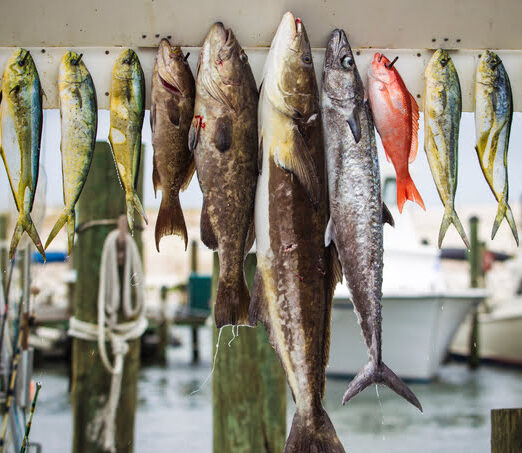
Do You Love Seafood?
Is Spanish Mackerel Safe to Eat?
Spanish mackerel are safe to eat in moderation and provide many benefits to your health. However, like nearly all predatory saltwater fish they can contain elevated amounts of mercury due to bioaccumulation.
It is recommended that you stick to one serving of Spanish mackerel or less per week to avoid heavy metal poisoning.
Related: Can You Eat Fish Scales? (Would You Even Want to?)
How to Clean Spanish Mackerel?

Spanish mackerel are a relatively easy fish to prep and fillet and are great for those looking to learn how to clean fish.
Since Spanish mackerel are an oily fish, it is best to start with bleeding the fish by cutting the gills and allowing the blood to drain into a bucket of ice water. This will reduce any overwhelming fishy flavor in the meat
To start your fillet, make a cut across the fish’s body just behind the pectoral fin and head. This cut should be deep enough to reach the spine, but not go past it.
The cut should be slanted slightly towards the top of the head in order to get the most meat and avoid the rib bones.
Next, you should rotate your knife 90 degrees so that it is laying horizontally. Poke your knife through the fillet so that it comes out of the top of the fish.
Now, keeping your blade against the spine, start to cut toward the tail with a back-and-forth motion. The goal is to remove as much meat as possible without puncturing the backbone.
Once you reach the tail you should have a perfectly separated Spanish mackerel fillet. Repeat the same steps for the other side of the fish.
Now that you have both of your fillets, you can either leave the skin on or remove it.
To remove the skin make a horizontal cut to begin separating it from the meat, then grip the skin and push your knife towards the end of the fillet while keeping it completely horizontal.
Mackerel skin is very delicate so this must be done carefully to avoid puncturing it. Try to bend your knife blade against your cutting surface in order to keep it flush against the skin.
Best Ways to Cook Spanish Mackerel
Spanish mackerel can be prepared in a variety of different ways and is very adaptable to different cooking methods. You can dress up the meat as little or as much as you like to suit your flavor preferences.
There are many delicious ways in which you can cook Spanish mackerel. One of the most popular is pan-frying or searing.
Pan searing is a quick and easy way to make a delicious meal out of your catch.
Throw the filets in a pan with some butter and garlic and sear on medium-high until they are cooked through, then top with freshly squeezed lemon juice, thyme, salt, and pepper for a simple recipe that compliments the flavors of the fish.
Other popular ways to prepare Spanish mackerel are frying, blackening, baking, and grilling. The best flavors to pair with Spanish mackerel include garlic, citrus, ginger, chili pepper, paprika, thyme, parsley, and cumin.
Can Spanish Mackerel be Eaten Raw?
Spanish mackerel is a great option to be eaten raw. The raw meat has a surprisingly mild flavor and is comparable to other sushi-grade fish like tuna. You can prepare it as sushi, sashimi, or ceviche.
You may also like: How to Tell if Fish Has Gone Bad (Smell, Touch, Taste.)
If you are going to eat Spanish mackerel raw, it’s best to eat it as soon as possible after catching it to keep the meat fresh and not fishy.
Although Spanish mackerel rarely have worms, they can have parasites just like any other fish. If you notice anything out of the ordinary in the meat you should not consume it raw and opt for cooking it instead.
If you want to be really safe you can freeze your mackerel for 24 hours before consumption to ensure any potential parasites have been killed.
Final Thoughts
Spanish mackerel has excellent flavor and is easy and convenient to prepare. It is a great starting point if you are unsure about trying a more oily variety of fish.
Not only are Spanish Mackerel good to eat, but they can be cooked in many different styles and flavors, making them a great fish to keep for anglers of all tastes, so get out there and try it for yourself!

Growing up in Florida, I’ve been surrounded by saltwater my entire life…and I love sharing my passion with others.
To learn more about why I started Saltwater Mecca, visit the ABOUT page.
Thank you for reading this article. Browse around & have some fun!

